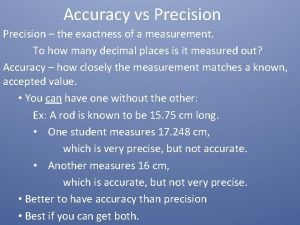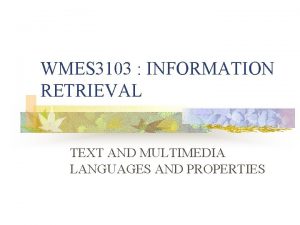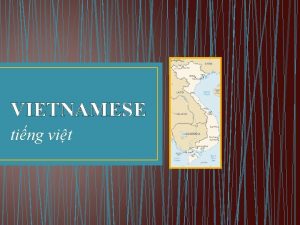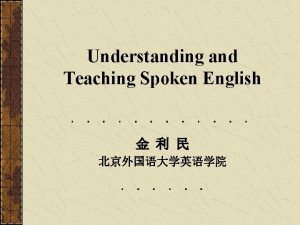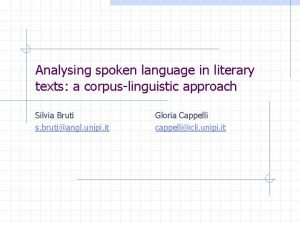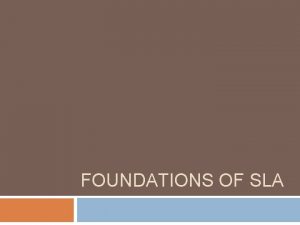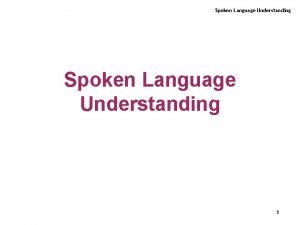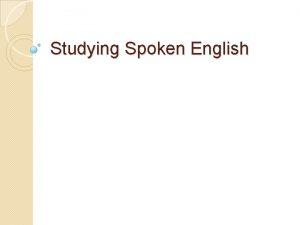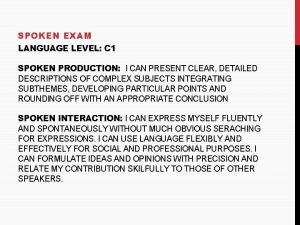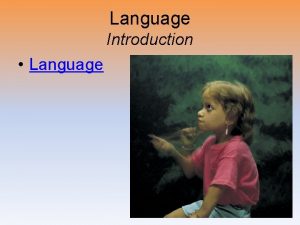Unit 2 part 3 Notes Language Exactness Spoken





- Slides: 5

Unit 2 part 3 Notes Language Exactness Spoken word vs. Written word • When something is written you can read it over and over. • However, when something is spoken the audience must “get it” the first time. • Accuracy with language means using words that mean exactly what you are trying to say. • The average person has a vocabulary of 10, 000 words.

Terms: • 1. Concrete Words- Name things that we can perceive through sight, hearing, touch, taste or smell • 2. Abstract Words- Names for qualities, attributes, and the like. • 3. Denotation- Refers to the basic meaning of the word. The definition that can be found in the dictionary. • 4. Connotation- Refers to the meaning of the word that goes beyond the dictionary definition. The meaning that is associated with the word.

Figures of Speech • 1. Imagery- Language that appeals to our senses. • 2. Metaphor- Compares two things without the use of “like” or “as. ” • 3. Simile- Compares two things using “like” or “as. ” • 4. Analogy- Compares two things. Metaphors and Similes are types of analogies. • 5. Allusion- Make a reference to a well-known person, place, thing or idea. • 6. Antithesis- Contrasting of terms against each other (opposites) Example: “It was the best of times, it was the worst of times. ” • 7. Oxymoron- Using words in opposition side by side. Example: jumbo-shrimp, pretty-ugly, icy-hot • 8. Irony- Words that imply the opposite of what they say on the surface.

Exaggerated Imagery • 1. Hyperbole- Overstatement for sake of emphasis Example- “I laughed my head off…” • 2. Understatement- Making less of something of emphasis. • 3. Personification- Giving human characteristics to inanimate objects.

Sound Devices • 1. Alliteration- Repetition of an initial sound • 2. Assonance- Repetition of vowel sounds • 3. Consonance- Repetition of consonant sounds anywhere in words. • 4. Parallelism- Using the same grammatical form to express that ideas should be treated equally.
